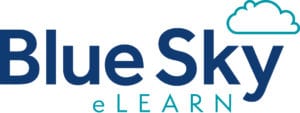What do effective leaders have in common? Perhaps it’s their ability to lead from within or to successfully navigate through times of uncertainty and adversity.
Sarah Levitt, creator of the Making Magnificent Project™, is an executive coach, keynote speaker, and author, who works with leaders to optimize their talents and strengths and drive exceptional business outcomes. In her recent book, Magnificent Leadership, she shares the stories of a diverse group of leadership exemplars and how they were able to transform and transcend circumstance in order to achieve greatness.
In this episode of the Leading Learning podcast, Celisa talks with Sarah about her definition of leadership, commonalities between leaders that emerged from her book, as well as the essential relationship between leading and learning.
To tune in, just click below. To make sure you catch all of the future episodes, be sure to subscribe by RSS or on iTunes. And, if you like the podcast, be sure to give it a tweet!
Listen to the Show
Read the Show Notes
[00:18] – Thank you to Blue Sky eLearn, sponsor of the Leading Learning podcast for the first quarter of 2018. Blue Sky is the maker of the Path learning management system, an award-winning, cloud-based learning solution that empowers your organization to maximize its message. Blue Sky also provides a range of virtual event and instructional services to help you maximize your content and create deeper engagement with your audience. To find out more about Blue Sky eLearn and everything it offers, visit https://www.blueskyelearn.com.
[01:14] – Highlighted Resource of the Week – Sarah Levitt’s, Making Magnificence podcast – here you can access recordings of some of the many interviews with leaders that she conducted for her book. These include people like Brad Wilson, CEO of Blue Cross Blue Shield of North Carolina and Dana Born, who was a Brigadier General in the US Air Force and is now a lecturer in Public Policy at Harvard’s Kennedy School of Government.
[01:53] – A preview of what will be covered in this podcast where Celisa interviews leadership expert, speaker, and author, Sarah Levitt.
[03:33] – Introduction to Sarah and some background information about her work and interests.
[04:33] – Even though we’ve known each other for several years, what’s prompted the conversation today is the release of your first book, Magnificent Leadership. Before we dive into some of the specifics around that, would you give us a little background on the book and what led you to write it? Sarah shares that she began the Making Magnificence Project ™ about 5 years ago and it was really out of curiosity to hear the stories from leadership exemplars to understand how they navigated conditions of transition and uncertainty. She then developed a keynote out of this, which led to her writing the book.
[06:55] – Before we go any farther into the book and its concepts, it seems worthwhile defining the central term. What is leadership? How do you define it? Sarah defines leadership as self-leadership first—or being able to bring all of ones talents and gifts to bear for fruition and directing those toward an aspiration—so leading ones self first and then, ideally to bring others along with you.
[07:57] – One of the aspects of your book that I appreciated is how you talk not only about leadership of other but also self-leadership. Would you talk about how those two aspects of leadership—of others and of self—relate? Are they always equally important? Sarah notes that what she sees and continues to see with clients and in her interviews is that self-leadership has to come first. It’s primary because without that it’s really hard to inspire others if we aren’t inspired ourselves—and it’s not just about inspiration, it’s also for the challenging times as well. How a leader frames leading themselves through uncertainty sets the tone for how other people in the organization/association are going to see it as well.
[10:06] – In Magnificent Leadership, you write that as you began looking at the interviews you’d done and the stories you’d collected, themes began to emerge and in the end, there were eight threads that ran through the stories. Would you tell us about one or two of the threads you identified and more about what that thread means? Sarah talks about how all of the leadership exemplars featured in the book faced significant challenges in one form or another and found their way through it. It’s the frame that they use or lens they choose to look through, which determines outcome and/or their plan of action. She shares an example related to this that is highlighted in the book. Sarah adds that it’s not just about how we are going to frame the challenge, but on the opposite end of the spectrum, it’s about what do we do with success as well—How do we build on it? How do we not take it for granted? How do we leverage it? In addition, Sarah notes one of things that was interesting as she was writing the book was that almost all of the leadership exemplars featured possessed almost all of the eight key factors—so part of the challenge was deciding what story to put in each chapter.
[13:12] – What is another thread that you saw? And was there one that perhaps surprised you more than the others? Sarah shares that one of the stories that was really remarkable to her was Selma Ungar who was 91 when she interviewed her–she had a zest for life and accepted changes/challenges and then made a plan of action from there.
[17:50] – One of the recurring themes I noticed in the stories you share in Magnificent Leadership is the connection between learning and leadership. What are you thoughts on that connection? Sarah says going back to the concept of self-leadership, one of the themes/threads of Magnificent Leadership is questing for self-mastery which she really thinks of as an ongoing quest for learning, or staying curious. The ability to continue to strive, excel, learn and improve one’s self is inherent to leadership—and then for people who are leading or aspiring to lead, to create that kind of environment for teammates and colleagues. So creating a safe space not to know the answer and to make mistakes and experiment which ultimately leads to excellence. She points out there’s a direct line that runs between learning and an ongoing curiosity about the world and leadership.
[24:20] – What advice do you have for leaders in the business of lifelong learning who want to take their learning business to higher performance? And what advice do you have for aspiring leaders in the business of lifelong learning? Sarah says to take something from one level to the next – whether that’s one’s self or one’s team – it’s imperative to set the standard incredibly high and stretch to do everything you can to help people get there. On the team level, this means having people in the right roles and creating an environment where it’s ok to ask questions and experiment to develop internal best practices. For an individual, she says being aware of where one wants to go—what’s their goal and what do they need to get there? She adds it’s important to have somebody outside of yourself – such as a mentor – to provide reflection and someone to hold the vision of your potential to help you stretch through the challenges. So you need to be able to set a new strategic focus, prioritize, and delegate. Sarah emphasizes the importance of being open to somebody’s guidance on how to elevate and create higher performance, something she says goes back to being a learner.
[30:28] – What is one of the most powerful learning experiences you’ve been involved in, as an adult, since finishing your formal education? Sarah shares it’s been anytime she’s been scared and had to stretch that’s been the most powerful—so where’s she had self-doubt and then made herself stretch and do it anyway. Recently, this is when she began speaking/keynoting, which have given her opportunities to be scared and to stretch. She also says the Making Magnificence Project™ has been a great opportunity for learning in several different ways. As she was writing the book, she also realized that the chapter she was working on was exactly what she needed to be reminded of herself—so there is a reciprocal relationship where she is the creator but it’s also her teacher in some ways.
[33:12] – Do you seek out those types of experiences that cause self-doubt and fear? Or do you come across those challenges and they turn out to be learning experiences? Sarah admits she’s probably tended to seek them out and doesn’t allow fear to get in the way.
[35:15] – How to connect with and/or learn more about Sarah:
- Website: https://www.sarah-levitt.com/
[35:39] – Wrap Up
If you are getting value from the Leading Learning podcast, be sure to subscribe by RSS or on iTunes. We’d also appreciate if you give us a rating on iTunes by going to https://www.leadinglearning.com/itunes.
We’d also be grateful if you would take a minute to visit our sponsor for this quarter, Blue Sky eLearn. In addition to finding out about their services, you will also find a variety of great resources that they offer for free.
Also, consider telling others about the podcast. Go to https://www.leadinglearning.com/share to share information about the podcast via Twitter, or send out a message on another channel of your choosing with a link to https://www.leadinglearning.com/podcast.
[37:39] – Sign off



 Partnerships and Pathways with Dr. William Clements of Norwich University
Partnerships and Pathways with Dr. William Clements of Norwich University
Leave a Reply